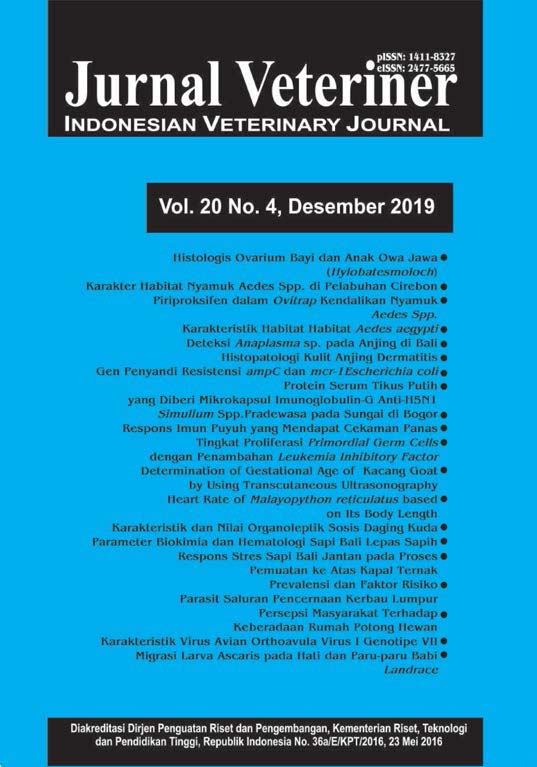Karakteristik Fisik dan Nilai Organoleptik Sosis Daging Kuda Berdasarkan Level Subtitusi Tepung Tapioka (PHYSICAL CHARACTERISTICS AND ORGANOLEPTIC VALUESOF HORSE’S MEAT SAUSAGE BASED ON LEVEL SUBTITUTION OF TAPIOCA FLOUR)
Abstract
The aim of the study was to determine the effect of the tapioca flour level substitution on physical characteristics and organoleptic values of sausage made of male horse’s meat.The material used was meat of 4.0-4.5 years old male horse and a number of spices in making sausages. This study was conducted in a One Way Completely Randomized Design with four treatments and three replications, namely P1 = Control (without tapioca flour); P2 = 15% tapioca flour; P3 = 30% tapioca flour and P4 = 45% tapioca flour. The data obtained were analyzed using analysis of variance. The treatments which significantly different were then continued analyzed using the Duncan New Multiple Range Test. The results showed that the level of tapioca flour substitution had a significant effect (P <0.05) on water holding capacity (WHC), color, aroma and texture of the sausage, while the cooking lost, tensile strength, pH, and taste were not affected significantly (P> 0.05). The substitution of 30% tapioca flour from the ingedients gave the highest value of horse’s meat sausages in WHC of (45.74 ± 8.18) %, but low in cooking losses of (3.33 ± 1.15) %, low tensile strength of (0.45 ± 0.00) kg/cm2 and normal pH (6.66 ± 0.05). Based on organoleptic values that substitution of 30% tapioca flour gave slightly brown color of sausage (3.83 ± 0.03), good aroma (5.95 ± 0.04), delicious taste (6.20 ± 0.03) and soft texture (5.68 ± 0.02).



















